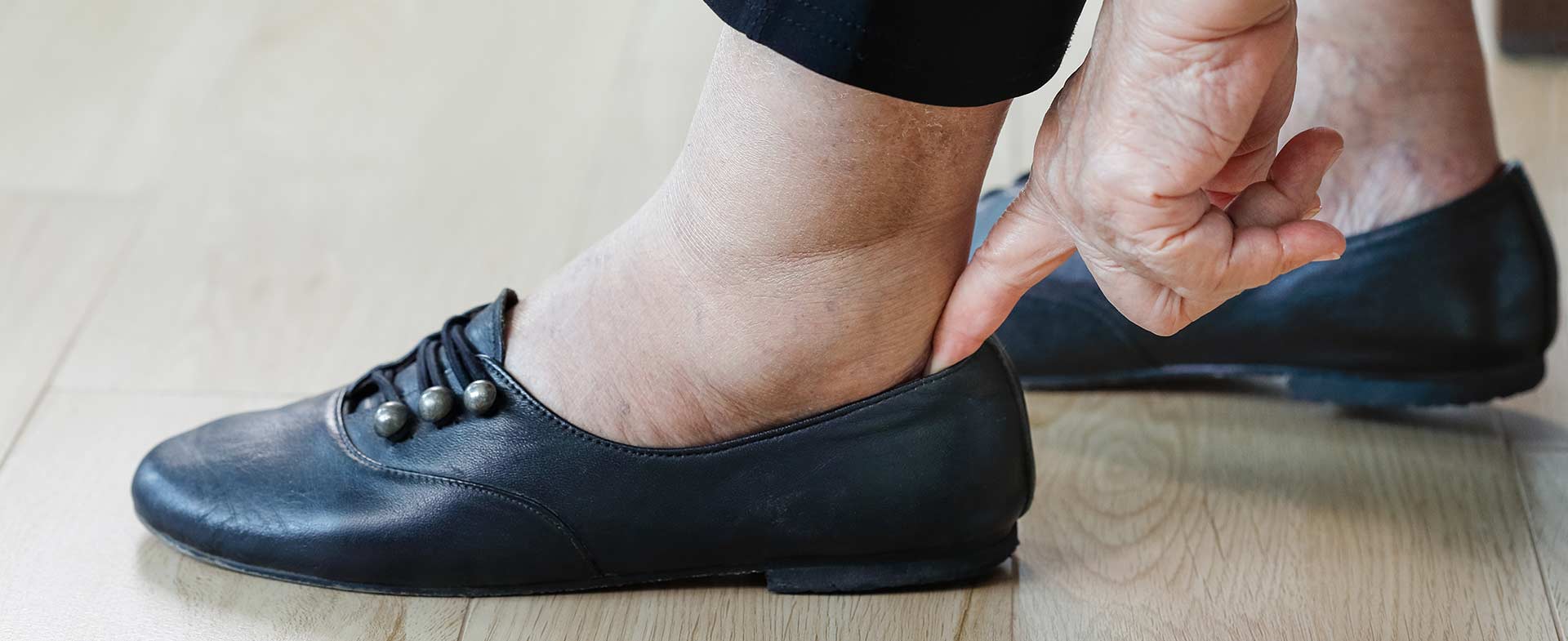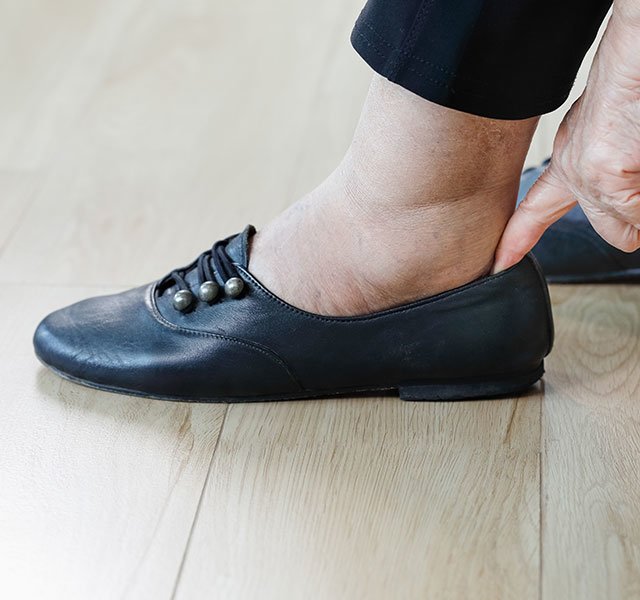Limb swelling, also known as edema, is a rather complex condition. Because your body is 50% fluids by weight, there could be many factors contributing to any puffiness of the arms and legs. Some can be minor, like general inflammation or temporary fluid retention, while others can be more complicated and life-threatening.
Olusegun Osinbowale, M.D., a vascular medicine specialist, explains the difference between two of the most common causes of serious limb swelling – lymphedema and chronic vein insufficiency (CVI).
“In the early stages of both conditions, patients may notice some mild swelling, but it can be months or even years before symptoms cause them to seek medical care,” says Dr. Osinbowale. “In the later phases, that is when patients start to recognize the seriousness of these conditions and experience more physical symptoms such as discomfort, limb heaviness, change in skin color, blisters or wounds that are not healing.”
While both CVI and lymphedema have similar symptoms, they are the result of very different mechanisms in the body. Early recognition helps you and your doctor to effectively manage these conditions and maintain your health.
Lymphedema
Lymphedema is a condition used to describe abnormal accumulation of lymphatic fluid in the body. Lymphatic fluid circulates throughout your body to keep your tissues healthy and helps you fight off infections. Your body produces this fluid naturally every day. Problems start to occur when this fluid pools (often in the arms or legs) instead of circulating through the body’s lymph nodes.
There are many reasons this happens, including:
- Infections
- Inflammation
- Illness
- Trauma to the body
- Cancer and cancer treatment (for example breast cancer is a leading cause of arm lymphedema)
- Scar tissue that prevents lymphatic drainage/lymphatic fluid from circulating
Chronic Vein Insufficiency (CVI)
Similar to lymphedema, chronic vein insufficiency is caused by your body’s inability to properly circulate fluid through the body. The fluid in this case? Blood.
“When your circulatory system works correctly, blood cells carry oxygen effectively between your heart, lungs and the rest of the body,” says Dr. Osinbowale. “In cases of CVI, the blood cells aren’t able to circulate correctly, so it can cause blood to pool in the veins of your limbs.”
CVI is a macrovascular condition. This means that as the condition progresses, it can measurably impact other body systems. Conversely, like lymphedema, CVI may occur as a result of illness or trauma to the body which the person may have sustained over a short or long time frame.
“In some very severe cases of CVI, patients can actually develop lymphedema as well,” says Dr. Osinbowale. “This condition, called phlebolymphedema, occurs when veins blockages or backups lead to the body’s inability to circulate lymphatic fluid.”
Diagnosing And Treating CVI And Lymphedema
Because limb swelling can be related to a wide variety of conditions, timely diagnosis is important. An ultrasound and thorough evaluation by a specialist are typically used to identify possible causes such as blood clots - one of the most treatable underlying conditions. Sometimes other tests are necessary beyond an ultrasound. Once a diagnosis is made, different treatments can be recommended.
“Unfortunately, there is no cure for lymphedema and CVI,” says Dr. Osinbowale. “But they are treatable, and we want to do everything we can to help patients see improvement in their quality of life.”
To treat lymphedema, patients will often work with a lymphedema therapist for massage, exercise, education and lessons on lymphatic drainage.
For CVI, treatment can be a little bit more invasive. If blood clots are the identified cause, blood thinners can help restore circulation. More serious cases of CVI can involve procedures to improve blood flow when certain veins become too obstructed.
“Your blood flows through the body in a canal-like system of veins,” explains Dr. Osinbowale. “We can, in certain cases, modify damaged areas of the circulatory system to improve signs and symptoms of CVI.”
With both CVI and lymphedema, compression garments can help reduce day-to-day swelling and promote blood or lymphatic flow towards the center of the body.
Preventing Limb Swelling
Being aware of these conditions is one of the best ways to prevent them. A few ways you can do that include:
- Maintain a healthy weight and diet. Extra weight and poor diet put more stress on the body and can impair how well fluids are able to circulate.
- Make exercise part of your routine. Your circulation is greatly enhanced by at least 30 minutes of physical activity every day that goes beyond walking short distances at home, at work or performing errands. This helps both your heart and your muscles to circulate fluid.
- Understanding your family history. If you have a family history of blood clots, varicose veins, limb swelling or obesity, you are at higher risk for these conditions.
- Get screened early. Annual physical exams are a great way to screen, identify or monitor certain health conditions. Since there is an increased chance of lymphedema after breast cancer treatment, screening is recommended in such cases.
- Wear compression garments. Wearing compression garments can help maintain healthy circulation when you have risk factors, including sitting or standing in place for extended lengths of time.
To find a vascular medicine specialist at Henry Ford, visit henryford.com or call 1-800-436-7936.
Dr. Olusegun Osinbowale is a vascular medicine specialist who sees patients at Henry Ford Medical Centers in Detroit, Brownstown, Sterling Heights and Bloomfield Township.



